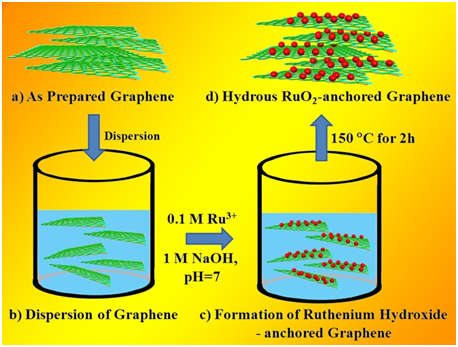Z.-S. Wu, D.-W. Wang, W. Ren*, J. Zhao, G. Zhou, F. Li, H.-M. Cheng*,
Advanced Functional Materials 2010, 20 (20): 3595-3602.
DOI:10.1002/adfm.201001054 [PDF]

Abstract:
Hydrous ruthenium oxide (RuO2)/graphene sheet composites (ROGSCs) with different loadings of Ru are prepared by combining sol–gel and low-temperature annealing processes. The graphene sheets (GSs) are well-separated by fine RuO2 particles (5–20 nm) and, simultaneously, the RuO2 particles are anchored by the richly oxygen-containing functional groups of reduced, chemically exfoliated GSs onto their surface. Benefits from the combined advantages of GSs and RuO2 in such a unique structure are that the ROGSC-based supercapacitors exhibit high specific capacitance (~570 F g−1 for 38.3 wt% Ru loading), enhanced rate capability, excellent electrochemical stability (~97.9% retention after 1000 cycles), and high energy density (20.1 Wh kg−1) at low operation rate (100 mA g−1) or high power density (10000 W kg−1) at a reasonable energy density (4.3 Wh kg−1). Interestingly, the total specific capacitance of ROGSCs is higher than the sum of specific capacitances of pure GSs and pure RuO2 in their relative ratios, which is indicative of a positive synergistic effect of GSs and RuO2 on the improvement of electrochemical performance. These findings demonstrate the importance and great potential of graphene-based composites in the development of high-performance energy-storage systems.
|